Submitted by WA Contents
MAD Architects imagines Nanhai Art Center like "a continuous wave of water" in Foshan city
China Architecture News - Jan 05, 2024 - 06:50 3856 views
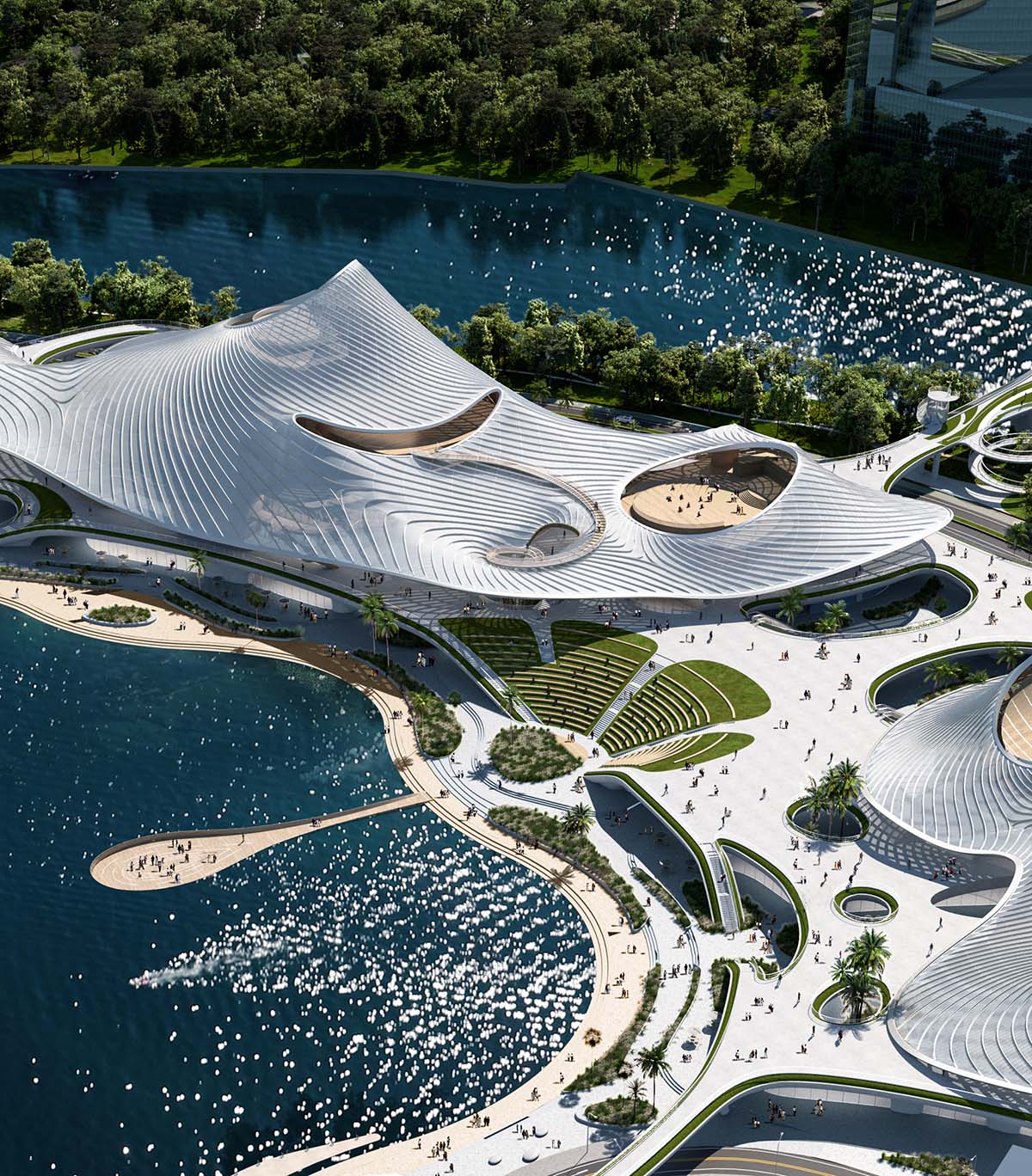
MAD Architects has unveiled design for a new art center with porous and floating canopy resembling "a continuous wave of water" in Foshan city, Guangdong in China.
Called Nanhai Art Center, the 59,445-square-metre building will include three major functions: the Grand Theatre, the Museum, and the Sports Center.
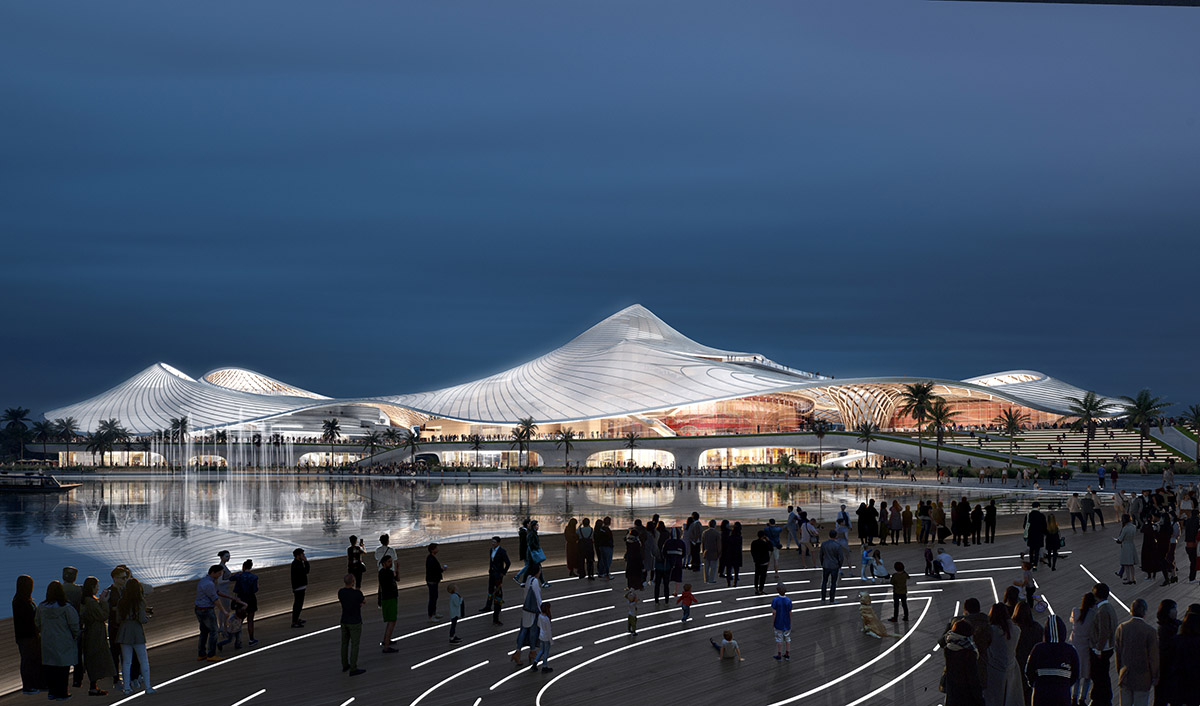
MAD's new development is located in Nanhai Cultural District, the heart of the Guangdong-Hongkong-Macao Greater Bay Area, an important urban site that bridges the cities of Guangzhou and Foshan.
Once complete, the building, described as "a new public gateway", will be a home to social, creative, and natural facilities for the citizens of Guangzhou and Foshan on the waterfront.
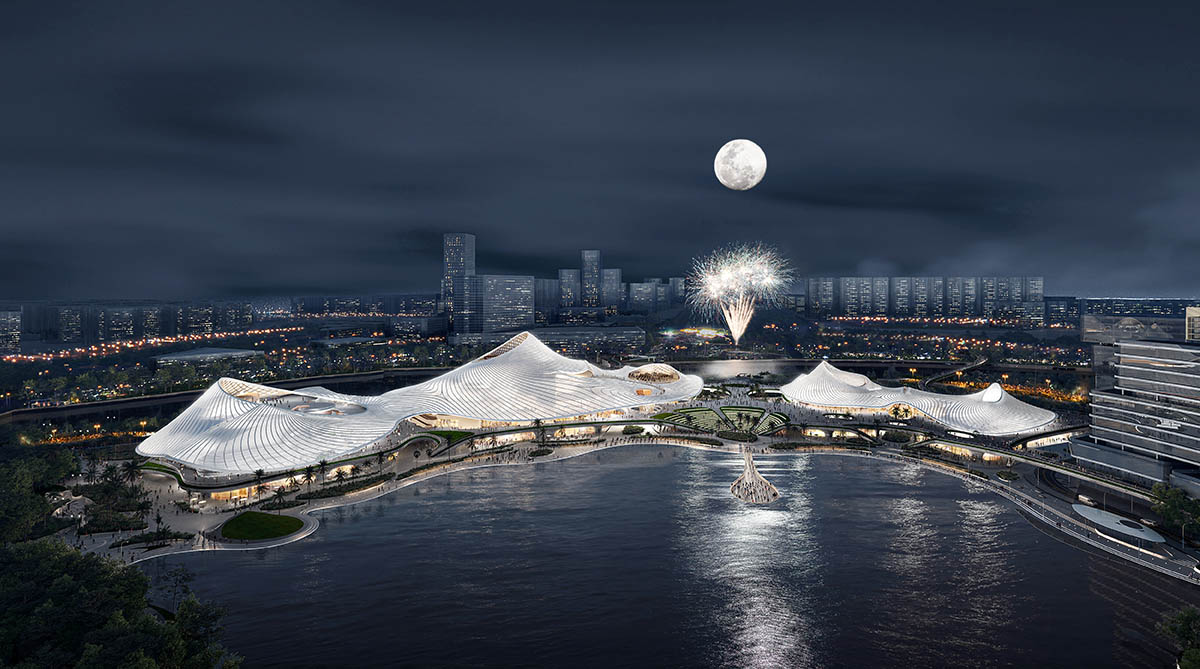
"The traditional culture of Nanhai is in the drum beat and boat drift during the dragon festival boat race and in the kung-fu in the lion dance," said Ma Yansong, the founding partner of MAD.
"Watching them, you can feel the dynamic vibrant, and innovative spirit from ancient times till today. We want to bring it back to modern living here," Yansong added.
The Nanhai Art Center is envisioned like "a continuous wave of water", hiding three main buildings looming underneath the floating sun canopy.
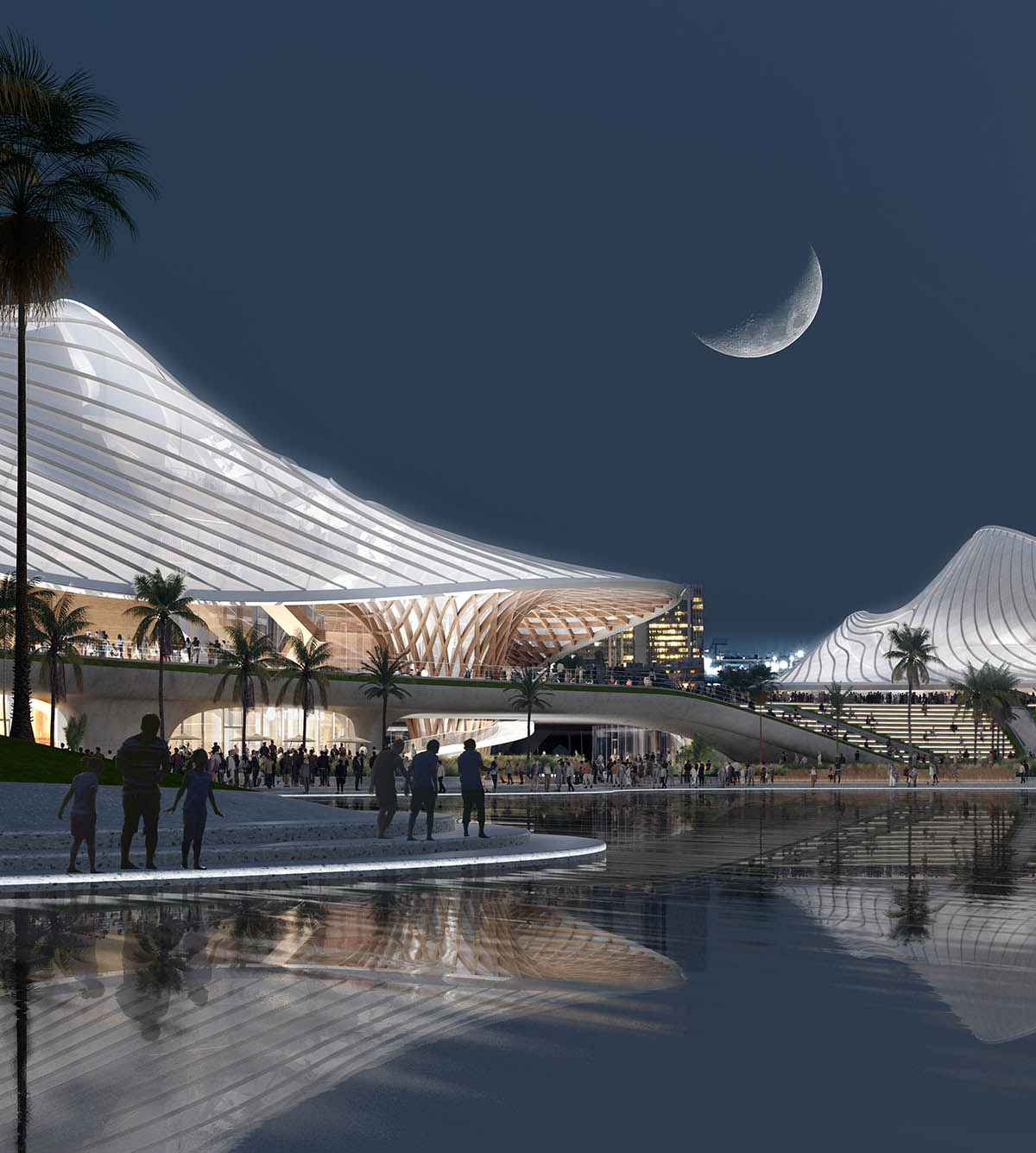
A spacious semi-outdoor space is integrated into the central landscape of the lake with the programs, inviting the local communities to immerse themselves in the waterfront landscape.
"The building is inspired by the large eaves of the traditional architecture of Lingnan"
"The local culture of Southern Guangdong is always about the gathering of people. To keep the same lifestyle, it has to be contributed by the contemporary cultural venues," Ma Yansong explained.
"The design of the Nanhai Art Center wants to provide the maximum grey spaces for such activities. It is also inspired by the large eaves of the traditional architecture of Lingnan (ancient broader Guangdong area)," Yansong continued.
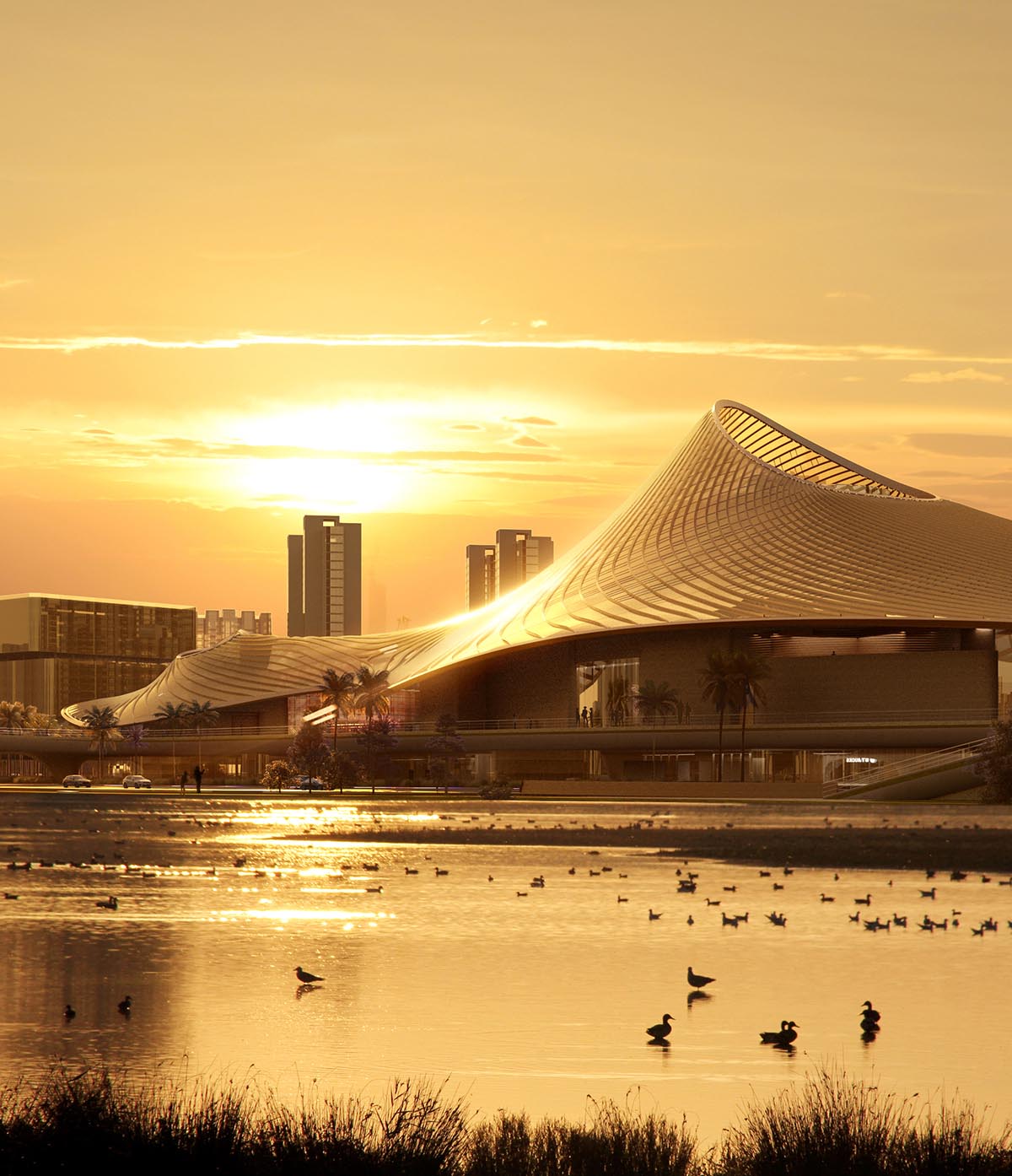
The design aims to build a spiritual field by creating a coherent visual axis to the lake. All programs are planned on both sides of the central axis.
The 89,269-square-metre Grand Theater and the Museum is situated on one side of the central axis. The Grand Theater includes a 1,500-seat amphitheater and a 600-seat multi-purpose hall, serving for a variety of performances and conferences;
According to MAD, the museum will meet the standards of a national-level museum upon completion.
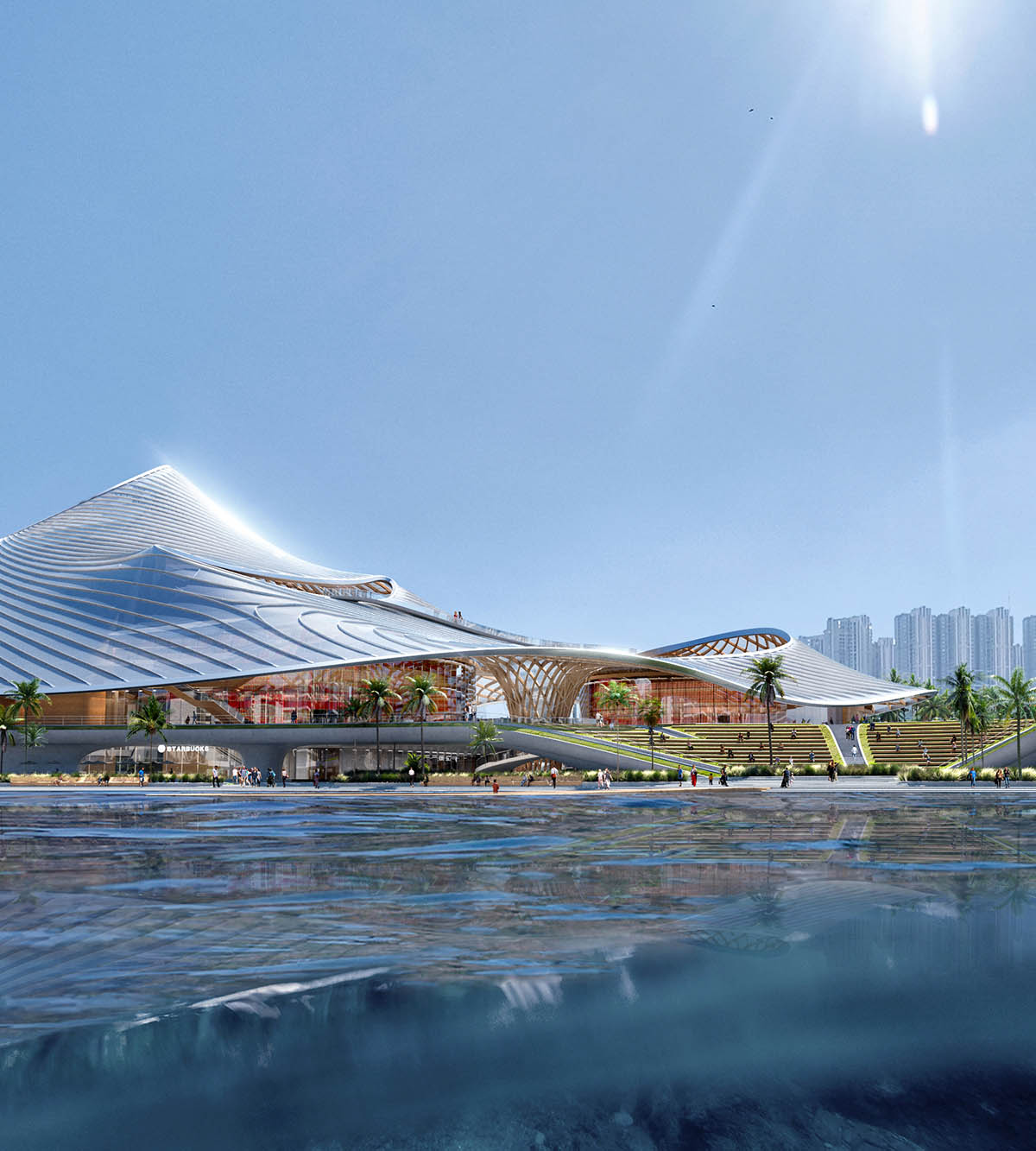
On the other side of the site is the Sports Center, covering a total of of 32,006-square-metre area. The Sports Center contains swimming pools, basketball courts, badminton courts, and other types of sports spaces and facilities.
The key feature of the building is its permeable facades that allow nature to flow through the site back to the city.
The two-storey landscape platform is extended outward, while organically linking the central lake, riverfront park, and urban space. This compound provides a harmonious balance between nature and architecture.
Commercial spaces are arranged along the lake, radiating architectural texture to the lakeshore landscape belt, while cultural spaces are interspersed among them.
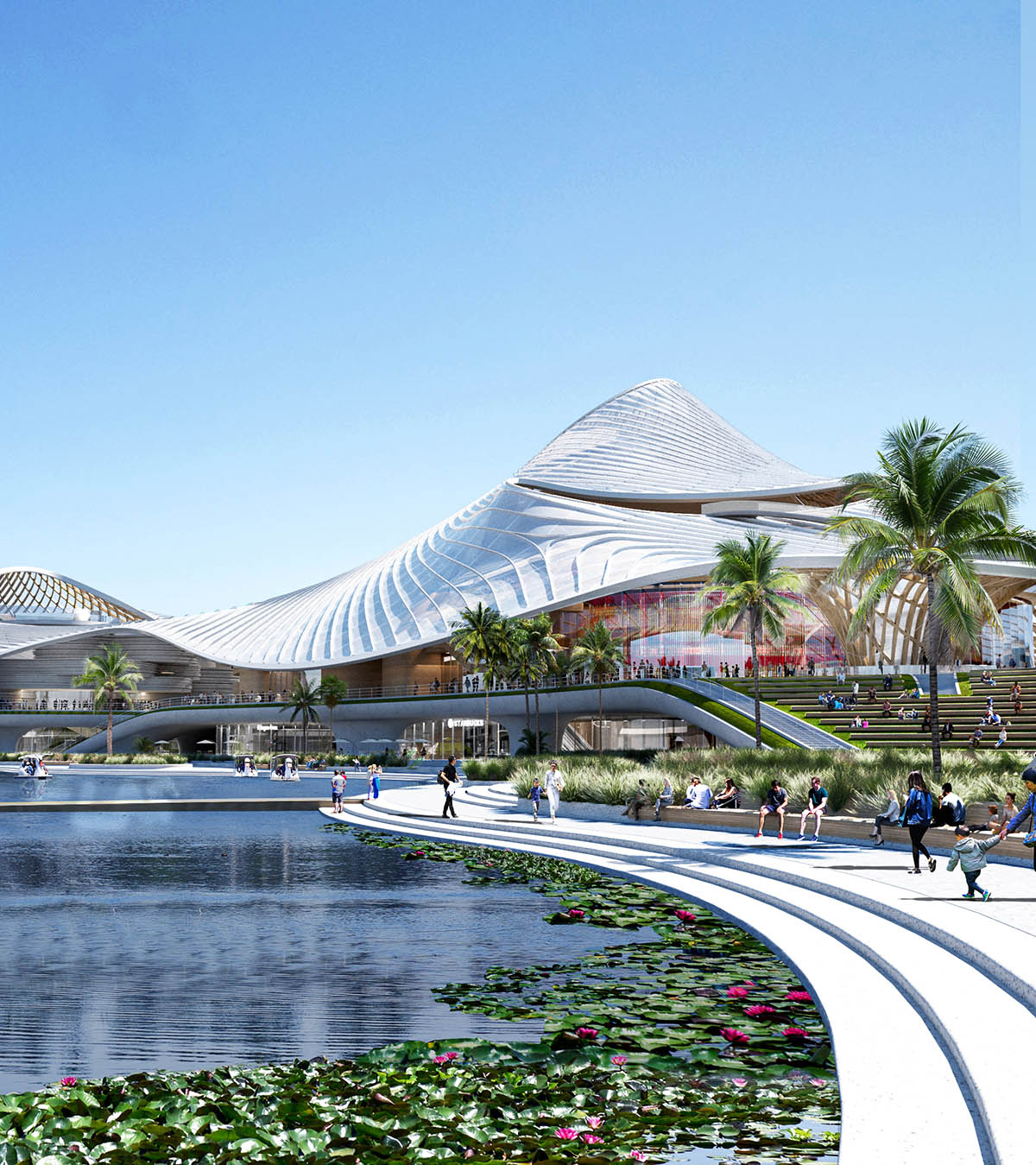
Viewing platforms and outdoor patios are placed on the second-floor to connect three main functions together. In addition, the commercial and F&B space are placed below to complete the visitor experiences and loop circulation.
Cultural spaces are accessed through the top of the platform that also serves as a pedestrian space.
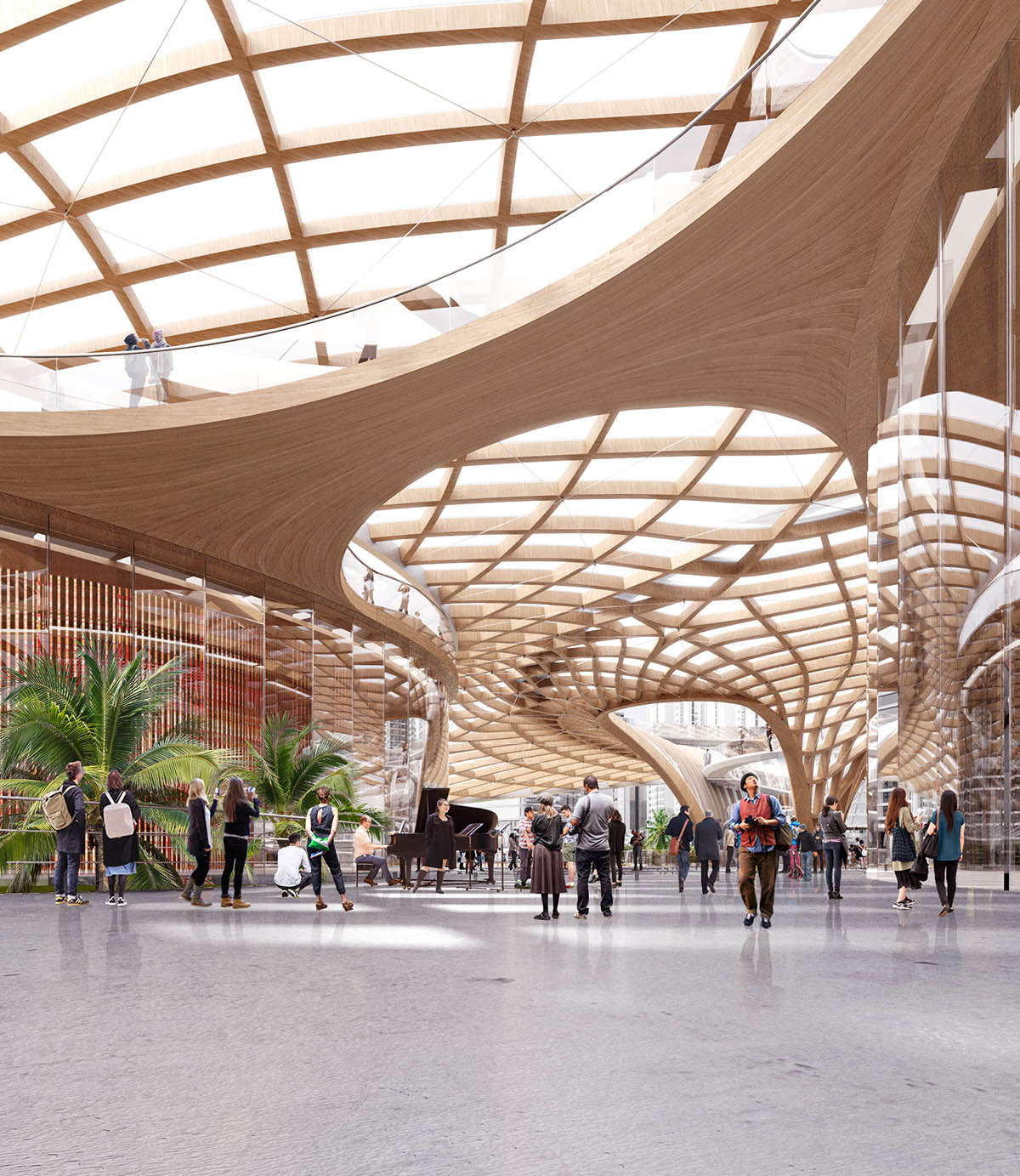
MAD fully integrates sustainability and green carbon reduction into the design concept from the start and form a narrative of building technology and innovation.
The canopy structure, made up of a translucent white ETFE membrane, help to incorporate energy-saving and environmentally friendly technologies, including photovoltaic power generation, rainwater collection, and vertical greening systems.

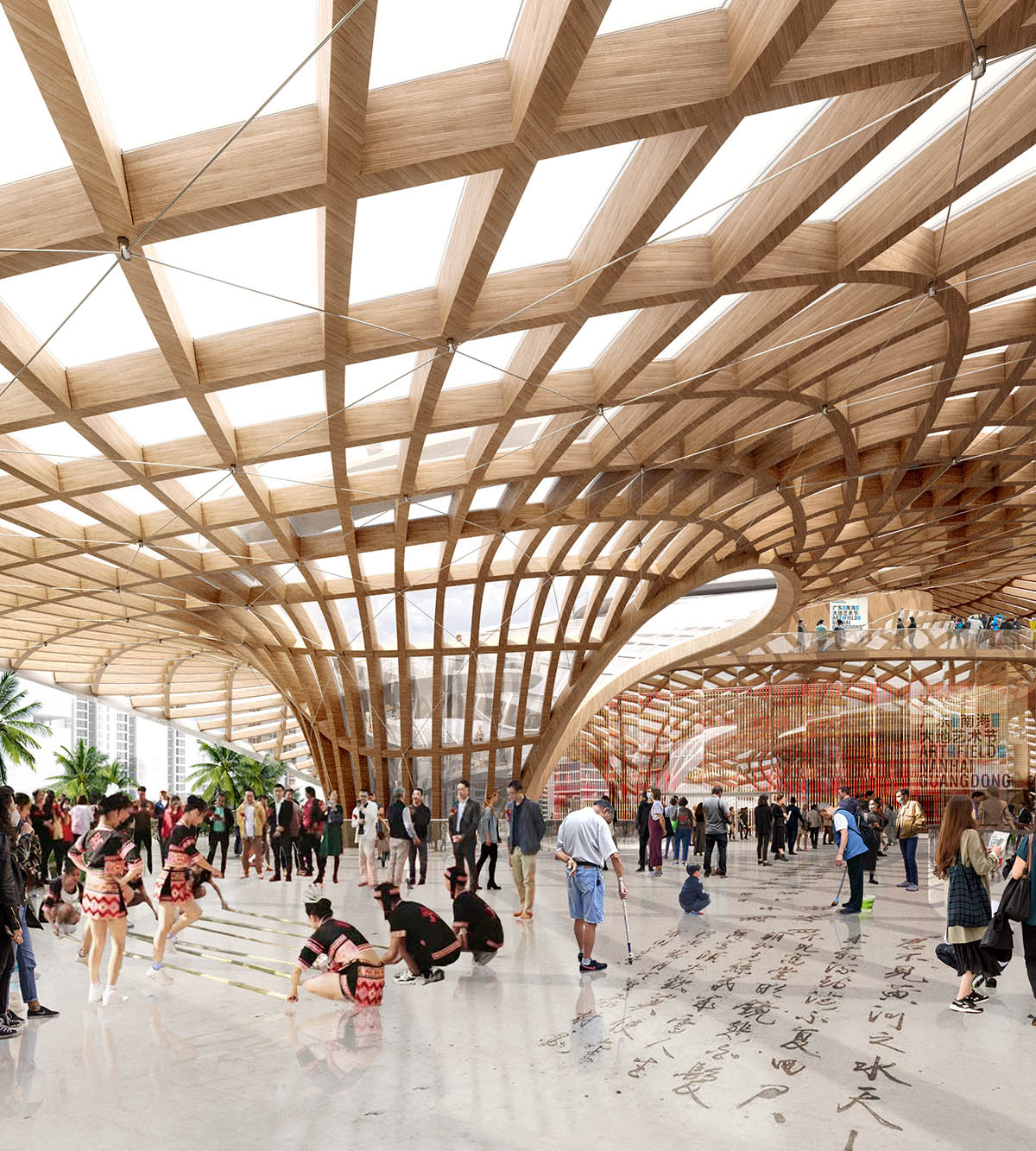
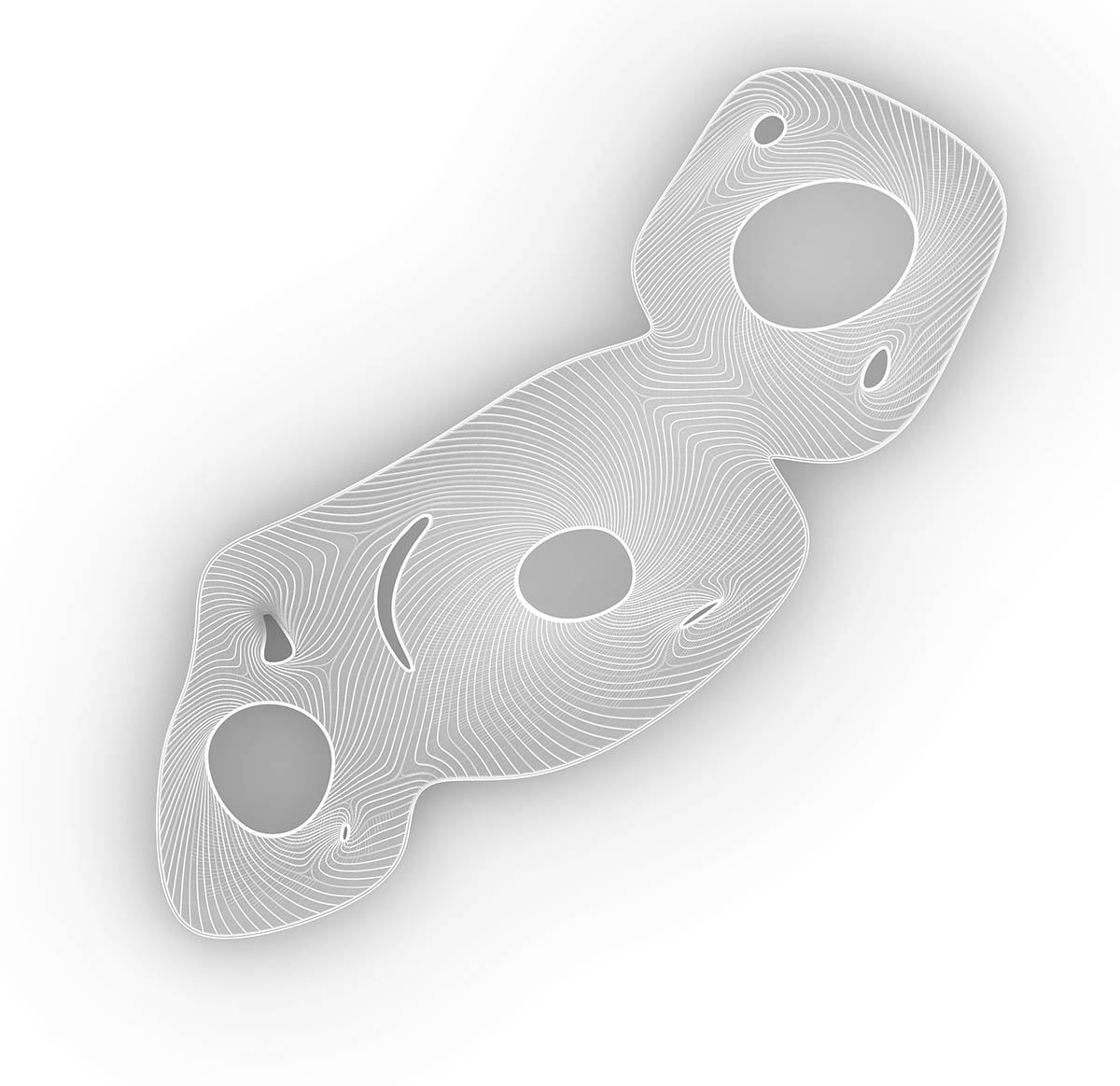
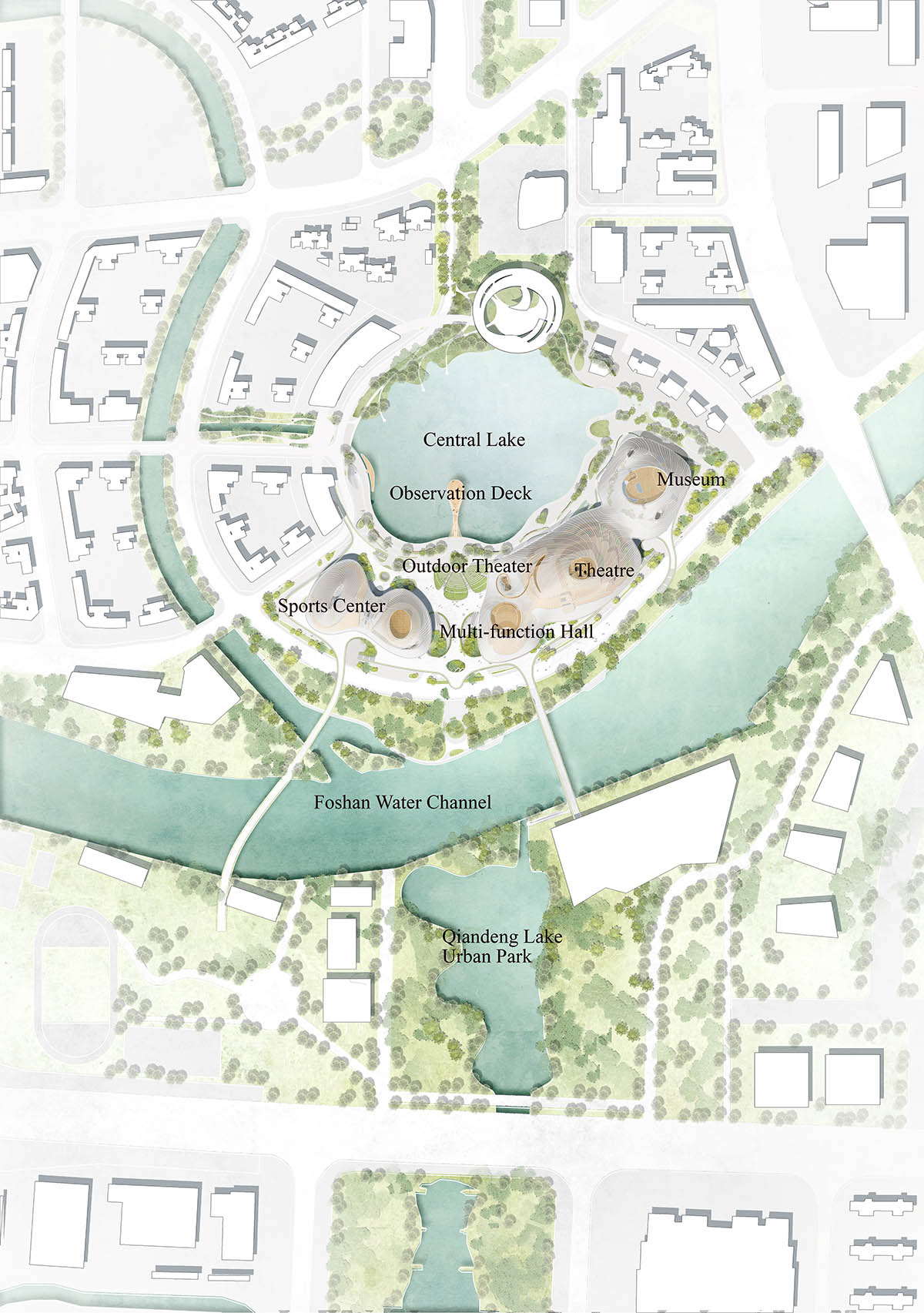
Masterplan

Exploded diagram
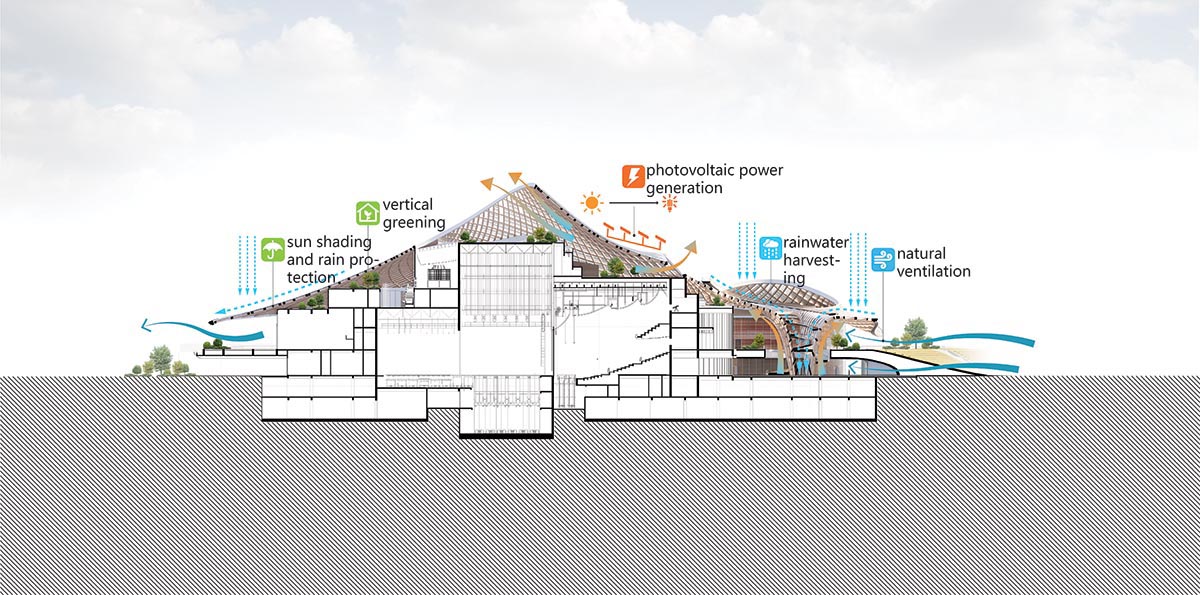
Green building diagram
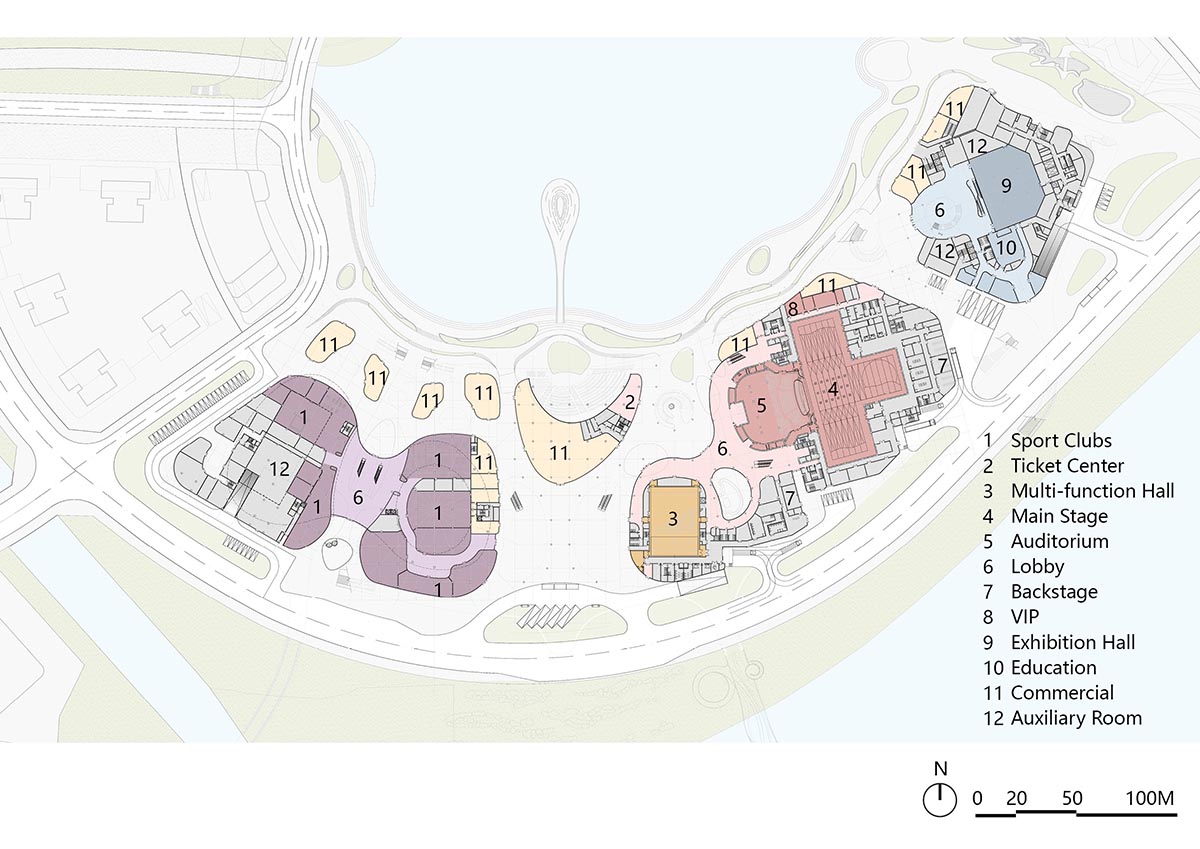
First floor plan
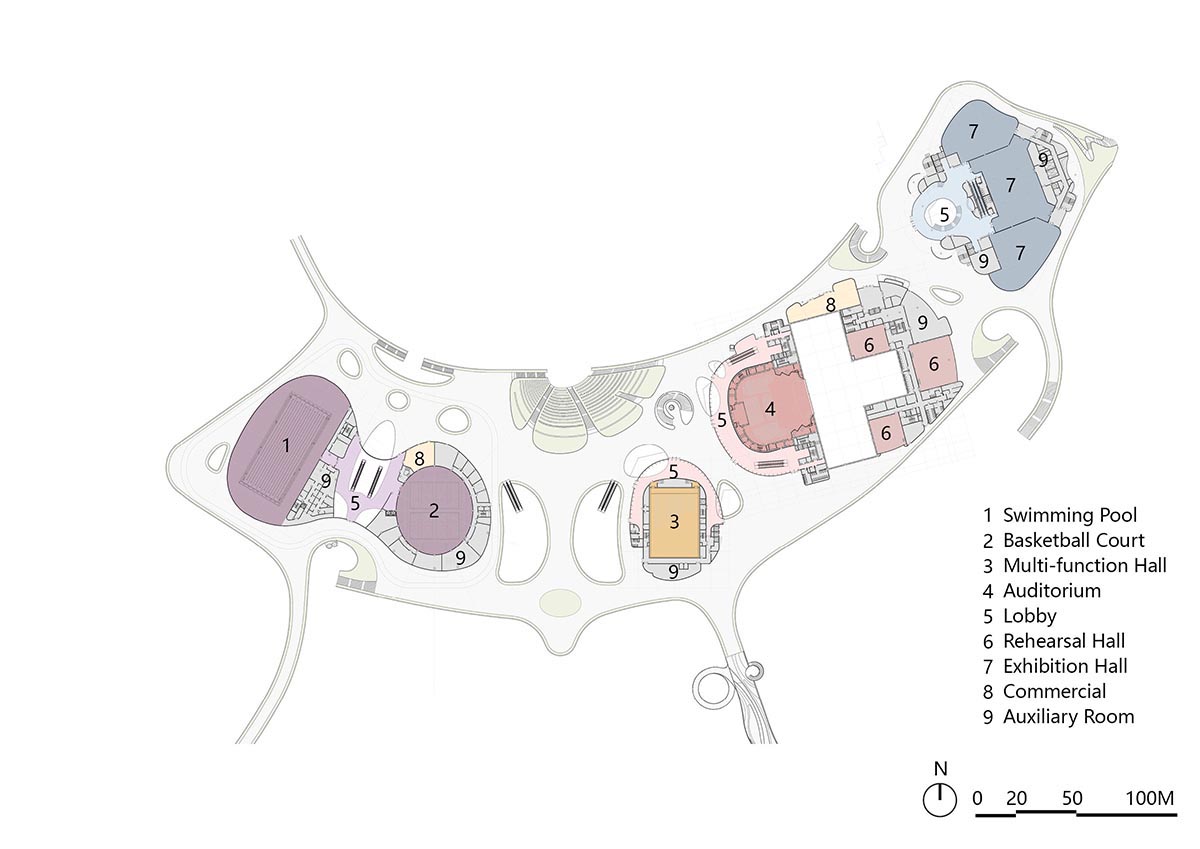
Second floor plan
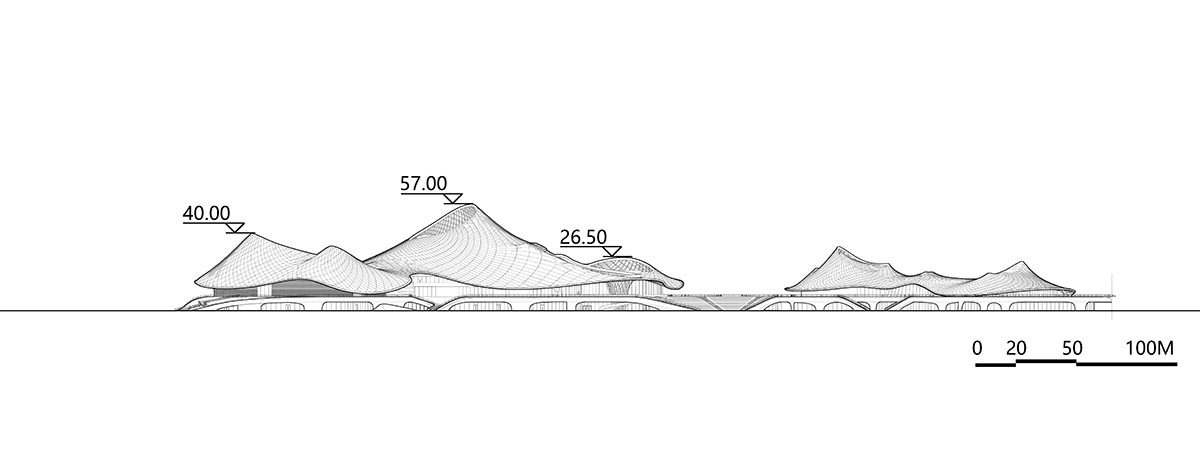
North elevation

South elevation

Section
As MAD noted, construction of the Nanhai Arts Center is expected to begin in 2024, with the completion in 2029.
MAD unveiled design for the renovation and extension of a warehouse at a former cement factory with a spaceship-like rooftop extension in Shanghai, China.
The firm is designing a new culture and arts center that is hidden beneath white metal roofs scattered like "bamboo leaves" in Anji, China.
MAD's two projects, including China Philharmonic Concert Hall in Beijing and Fenix Museum of Migration in Rotterdam, are among our 12 hotly-anticipated projects set to be opened in 2024.
Project facts
Project name: Nanhai Art Center
Architects: MAD Architects
Location: Foshan, China
Date: 2022-2029
Site Area: Approx. 59,455m2
Building Area: Approx. 121,275m2
Principal Partner(s) In Charge: Ma Yansong, Dang Qun, Yosuke Hayano
Associate Partner(s) in Charge: Kin Li, Liu Huiying
Design Team: Li Cunhao, Zhang Ying, Yoshio Fukumori, Rozita Kashirtseva, Hao Ming, Orion Campos, Zhang Lipei, Gao Chang, Zeng Tianxing, Li Yuchen, Ma Ran, Hemant Jindal, Jiang Yunyao, Zhou Rui, Ma Yiran, Zhang Tong, Peng Wanjing.
Client: Foshan Nanhai Youwei Baiyue Culture Co.
Contractor: Foshan Nanhai Liyayuan Real Estate Development Limited Company
Executive Architects: Tongji Architectural Design (Group) Co., Ltd
Landscape Consultant: Earthasia (Shanghai) Co., Ltd
Lighting Consultant: Ning Field Lighting Design Corp., Ltd.
Stage Craft Consultant: China Institute of Arts Science & Technology
All images courtesy of MAD.
> via MAD
